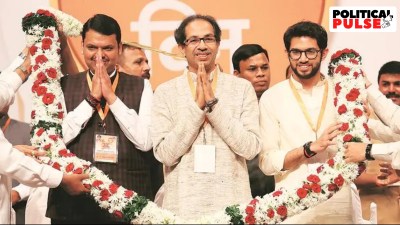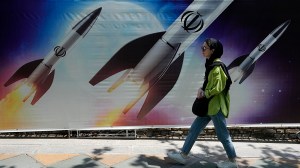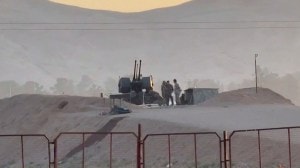- India
- International
To bridge the divide in Manipur, the effects of a long cycle of violence should be accepted
A hundred years after the event, an examination of the inter-ethnic conflict that complicates the anti-colonial narrative of the Kuki Rebellion.
 A History of Violence: A photograph of Kuki rebels from the book History of the Assam Rifles (1929) by LW Shakespear.
A History of Violence: A photograph of Kuki rebels from the book History of the Assam Rifles (1929) by LW Shakespear.
In the history of resistance in British India, one of the seminal events recorded in the north-eastern part of the country is the Kuki Rebellion of 1917-1919. In 1917, as World War I raged on, the British pressed the Nagas, Lushais, Kukis and other tribes into service as part of the Imperial army’s Labour Corps. The Kukis refused, leading to the Kuki Rebellion of 1917-1919.
With the centennial celebrations of this rebellion having been completed on October 17 this year, however, it’s time to look at how this event affected other tribes in the region. Such an examination presents a far more complicated picture, and the rebellion emerges as a significant one in the history of not just the Kukis, but other tribes in the region. So far, the conversation about this event has left out how the Nagas, especially the Zeliangrong people, suffered at the hands of the Kukis. The violence against them cannot be overlooked, even as the Kuki Rebellion is celebrated as an act of valour and resistance against British colonialism.
Oral history and archival records narrate tales of hundreds of Zeliangrong casualties, cases of headhunting, burning of villages etc. Arkotong Longkumer, a lecturer in religious studies at the School of Divinity, University of Edinburgh, noted in Reform, Identity and Narratives of Belonging: The Heraka Movement in Northeast India (Continuum, 2010) that the Kukis used the rebellion as an opportunity to attack Zeliangrong villages, and ignited the ethnic tension that followed in the 1920s.
Accounts of violence against the Zeliangrong people are also found in the archival records in the National Archives of India, New Delhi, and Assam State Archives, Dispur. British official correspondence, especially around 1931, is riddled with accounts of attacks by the Kukis against the Zeliangrong people during the rebellion. Colonial accounts describe the Zeliangrong people as a group of Naga tribes from Manipur who were at the receiving end of violence by the Lushais and Kukis.
Reports from the early 20th century of headhunting by the Kukis, who practised the act as part of their warring technique, are also found in archival records in the National Archives of India, New Delhi and Assam State Archives, Dispur. These reports state that in the Naga Hills, Kukis took 250 heads from the neighbouring villages. Women and children were the main victims of the violence, given that more than 2,000 men from the region, had been sent to France to help the Allied Forces. There are also reports of Kukis later being fearful of retributive violence by the Zeliangrong people.

The Zeliangrong people were, reportedly, unhappy with the British administration for its failure to protect them from the violence and it is believed that this was one of the factors leading to the Zeliangrong movement in the late 1920s, against the British. JP Mills, the then deputy commissioner, Naga Hills, affirmed, according to archival records, the violence unleashed against the Zeliangrong people by the Kukis. In a letter to the commissioner, Surma Valley and Hill Division, Mills stated that one of the reasons behind the Zeliangrong movement, led by Naga spiritual leader and political activist from Manipur, Haipou Jadonang, was to avenge the attack on his people. According to Naga author Asoso Yonuo, in Nagas Struggle Against the British Rule Under Jadonang and Rani Gaidinliu, 1925-1947 (Leno Print, 1982), one outcome of the violence against the Zeliangrong people during the Kuki Rebellion, was that it united them more.
Ethnic politics has remained a hot button issue in the region, with external dominant forces penetrating these faultlines and weaponising various groups. This complexity has enabled the state, as well as dominant groups, to exert control over various ethnic groups. This began with the colonial divide and rule policy. When the British entered the Naga hills in the early 19th century, their strategy for colonising the Nagas included stoking the conflict between the Nagas and Kukis. In his essay, The Kuki-Naga Conflict: Juxtaposed in the Colonial Context, published in Dynamics of Identity and Intergroup Relations in North-East India (Indian Institute of Advanced Study, 1999), Manipuri historian Lal Dena writes that William McCulloch, who was the British political agent in Manipur from 1844 to 1863 and from 1865 to 1867, resettled Kukis in 1840 on the ancestral lands of the Nagas. According to various accounts, until then, the Kukis had lived in Burma. The resettlement was meant to create a buffer and contain any resistance from the Nagas, the Burmese and the Lushai tribes.
Then, in the Anglo-Khonoma battle of 1879-80, the British used the Kukis to defeat the Angami Naga warriors, and during the Kuki Rebellion, Naga warriors were used to suppress the Kukis. The same strategy is seen in the late 1920s to early 1930s, when the Kukis were used to suppress the Zeliangrong movement led by Jadonang and Rani Gaidinliu. Hostilities between Kukis and Nagas in Manipur erupted again in the ’90s, due to contention over land, and is one of the bloodiest conflicts from a decade that was not short of them.
While ethnic groups were used as tools by the British to exercise colonial control, in the post-colonial period, they are mostly a subject of interest in the state-making process, wherein every ethnic community increasingly finds itself dependent on the state for its survival. The cycle of violence between the Nagas and the Kukis represents the ethnic contestation at play. To bridge the existing divides, therefore, each side needs to acknowledge how this cycle of violence has left its mark on the other.
(Richard Kamei is a doctoral candidate at the Tata Institute of Social Sciences, Mumbai. This article appeared in the print edition with the headline ‘The Fire Last Time’
Apr 20: Latest News
- 01
- 02
- 03
- 04
- 05






































